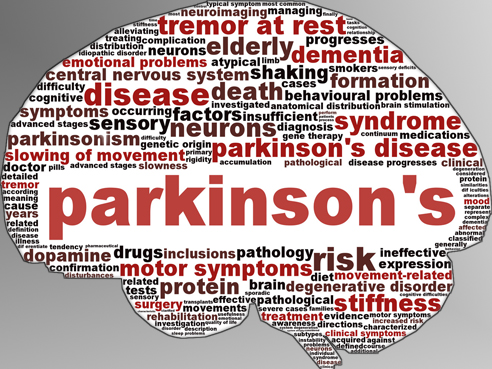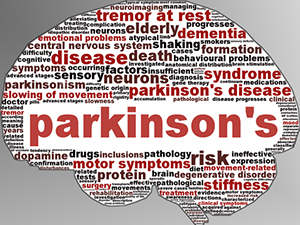Predicting Parkinson’s disease: Researcher develops new method for estimating age-of-onset

 In today’s world of increased risk for chronic disease, high instances of obesity, and declining health, many people feel that knowledge is power and the key to living a longer and healthier life. Over the years this has given rise to a consumer interest in genetic testing to determine a person’s level of risk for various hereditary disorders, such as Huntington’s disease, different forms of cancer, and even heart disease.
In today’s world of increased risk for chronic disease, high instances of obesity, and declining health, many people feel that knowledge is power and the key to living a longer and healthier life. Over the years this has given rise to a consumer interest in genetic testing to determine a person’s level of risk for various hereditary disorders, such as Huntington’s disease, different forms of cancer, and even heart disease.
Tanya P. Garcia, Ph.D., assistant professor at the Texas A&M Health Science Center School of Public Health, completed a new study in which researchers are working to develop a new method by which clinicians can estimate the age-of-onset for Parkinson’s disease (PD) in carriers of the PARK2 gene mutation. The results are published in this month’s Annals of Applied Statistics.
PD is a degenerative disorder of the central nervous system that results in a progressive loss of motor skills. Symptoms include uncontrolled movements, shaking, rigidity, and difficulty walking. Dementia is also a common occurrence for those in the advanced stages of the disease. Although it typically affects the elderly or those after age 50, there are early onset cases that are believed to be hereditary and connected to the presence of the PARK2 gene mutation.

“Identifying the predicted age-of-onset for various diseases can play a vital role in the genetic counseling process, as both clinicians and patients use risk estimates to guide their decisions on choices of preventive treatments and planning for the future,” said Garcia.
“For example, individuals with a family history of PD generally stated that if they were found to be a carrier and in their mid-thirties, they would most likely elect to not have children, or would be more inclined to prenatal testing.”
For studies of genetic diseases based on family history, predicting age-of-onset can be challenging. First, the genetic mutation status of many family members is usually unknown since, understandably, not everyone elects to get tested. Secondly, existing methods predict age-of-onset at different ages one-by-one, rather than all together. Predicting onset at each age individually has the tendency to yield invalid estimates.
Garcia and her co-authors developed a new statistical method that quickly predicts valid ages-of-onset for different ages simultaneously. Applying their method to the Consortium on Risk for Early Onset PD (CORE-PD) study, Garcia and co-authors found that individuals with two copies of the PARK2 mutation had a higher risk for early onset of PD than individuals with only one PARK2 mutation. Such results suggest a recessive mode of inheritance for PARK2 gene mutations for early onset PD. In addition, individuals with at least one copy of the PARK2 gene mutation tended to have an increased risk for early onset of PD than the general population who is not at risk.
The findings from this study may suggest that there are other genetic and environmental causes of PD in early onset cases that are different than late onset. Although further research is needed to better understand these differences, with the help of Garcia and these new statistical methods, patients can have a better understanding of PD and more effectively prepare for the future ahead.
Media contact: media@tamu.edu


